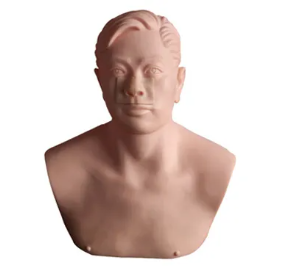

In conclusion, the maxillary sinus puncture training model plays an important role in improving the puncture skills of medical staff. Through repeated practice and simulated operation, medical personnel can be more familiar with the anatomy of the maxillary sinus, master the correct puncture methods and...
Maxillary sinus puncture training model is an indispensable tool in medical education and training, especially in improving the skills of medical staff. So, can we really improve the puncture skills in practice by training the model of maxillary sinus puncture?
First, it has a high degree of simulation. These models often employ advanced materials and technologies to simulate real human structure and physiological responses. As a result, when training with these models, medical personnel can feel a touch and feedback very similar to real operation. This simulation not only helps the medical staff familiarize themselves with the anatomic structure of the maxillary sinus, but also gives them a better grasp of the depth and direction of the puncture, thereby reducing errors and complications in practice.

Second, it provides a repeatable and safe training environment. In a real medical setting, there may be certain risks and uncertainties associated with performing maxillary sinus puncture procedures. However, when using the training model, medical staff can perform the exercise repeatedly without fear of harm to the patient. This repeatable training environment helps medical staff constantly correct their mistakes and gradually improve their piercing skills.
In addition, it can help medical personnel better cope with complex situations. In real-world operations, medical personnel may encounter a variety of unpredictable conditions, such as abnormal patient anatomy, bleeding, or pain. By performing simulation exercises on the maxillary sinus puncture training model, medical personnel can learn how to remain calm in these complex situations and take the right response.
Finally, it is worth mentioning that the use of the model can also be combined with other teaching methods, such as video teaching, case analysis, etc., to form a more comprehensive training system. This diversified teaching method can not only improve the theoretical level of medical staff, but also help them to combine theoretical knowledge with practical operation, so as to improve their puncture skills more comprehensively.
In conclusion, the maxillary sinus puncture training model plays an important role in improving the puncture skills of medical staff. Through repeated practice and simulated operation, medical personnel can be more familiar with the anatomy of the maxillary sinus, master the correct puncture methods and skills, and reduce errors and complications in actual operation.